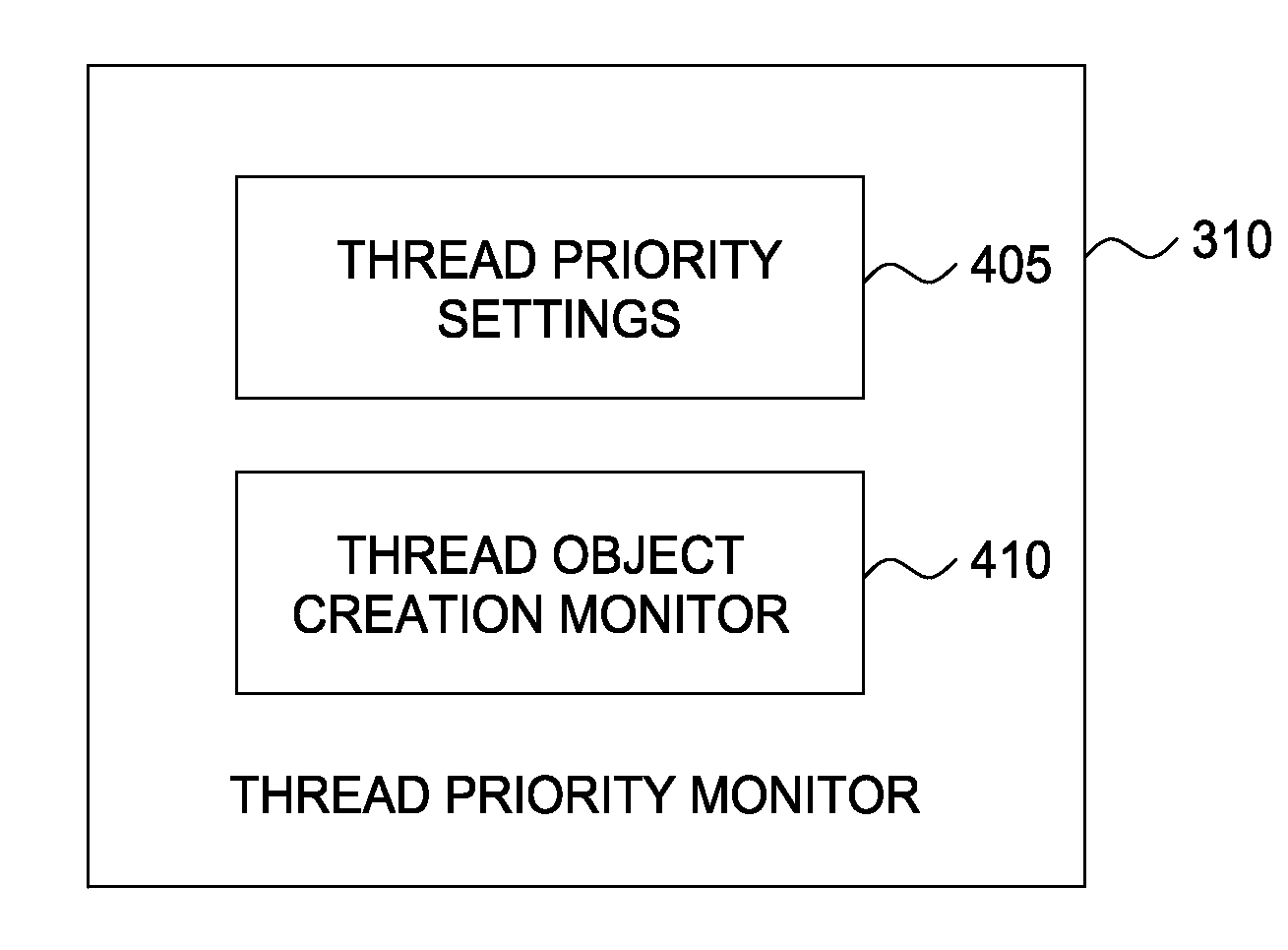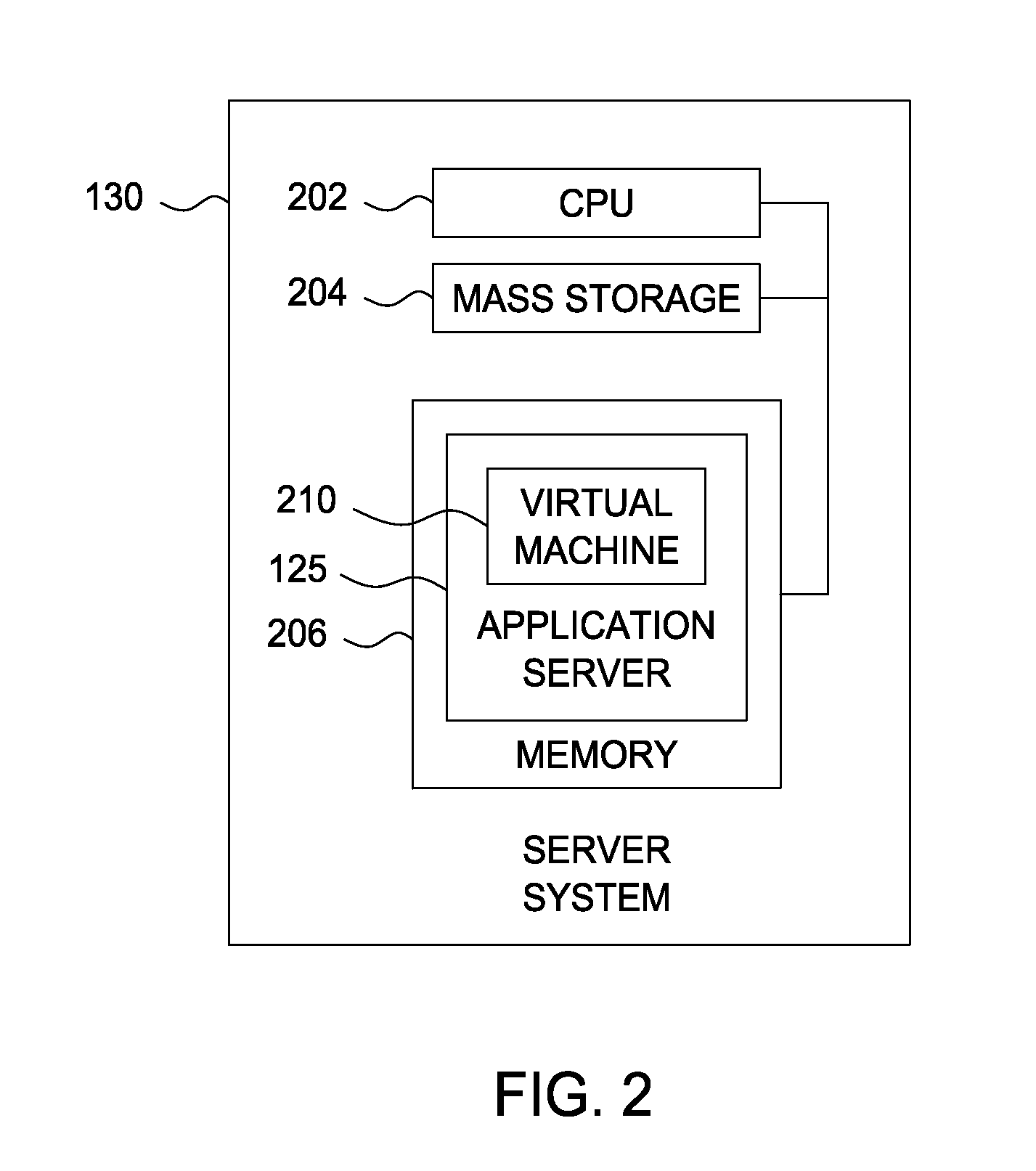Thread priority based on object creation rates
- Summary
- Abstract
- Description
- Claims
- Application Information
AI Technical Summary
Benefits of technology
Problems solved by technology
Method used
Image
Examples
Embodiment Construction
[0018]Embodiments of the invention provide a method, system and article of manufacture for managing thread priority based on the rate at which a thread creates new objects. Common situations where a single thread may create enough new objects to disrupt system performance include, without limitation, the following:[0019]Database Result set processing. Oftentimes a query result set object is sufficiently large enough that the number of objects a thread processing the query result set object creates can be quite cumbersome and tax the system being used.[0020]In a Java® application environment, creating a bean object from a query result set object may itself involve creating a large number of objects.[0021]Creating and parsing of extended markup language (XML) documents often requires creating a large number of objects.[0022]A thread processing data from an incoming socket connection often requires creating a large number of objects
In any of these (and other) cases, embodiments of the ...
PUM
 Login to View More
Login to View More Abstract
Description
Claims
Application Information
 Login to View More
Login to View More - R&D Engineer
- R&D Manager
- IP Professional
- Industry Leading Data Capabilities
- Powerful AI technology
- Patent DNA Extraction
Browse by: Latest US Patents, China's latest patents, Technical Efficacy Thesaurus, Application Domain, Technology Topic, Popular Technical Reports.
© 2024 PatSnap. All rights reserved.Legal|Privacy policy|Modern Slavery Act Transparency Statement|Sitemap|About US| Contact US: help@patsnap.com










